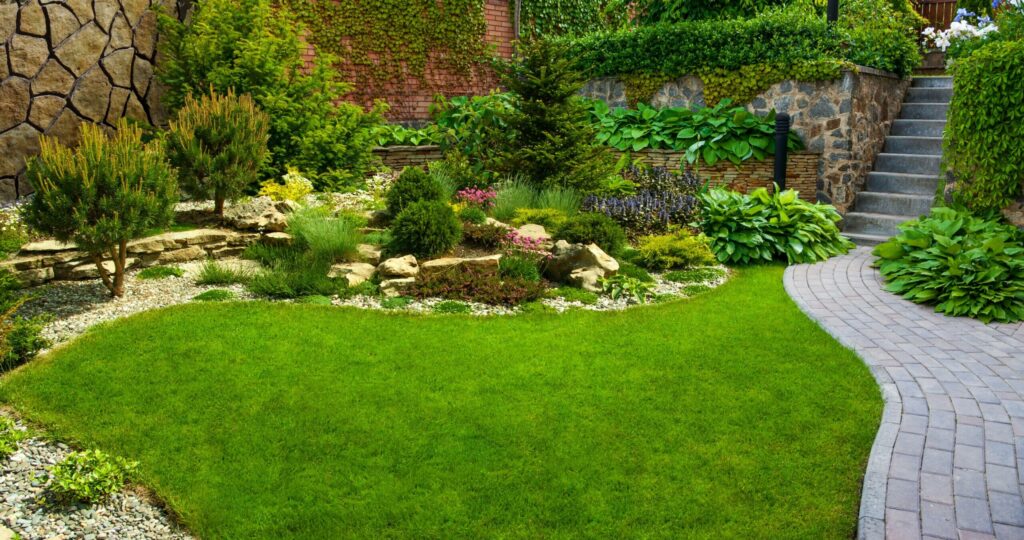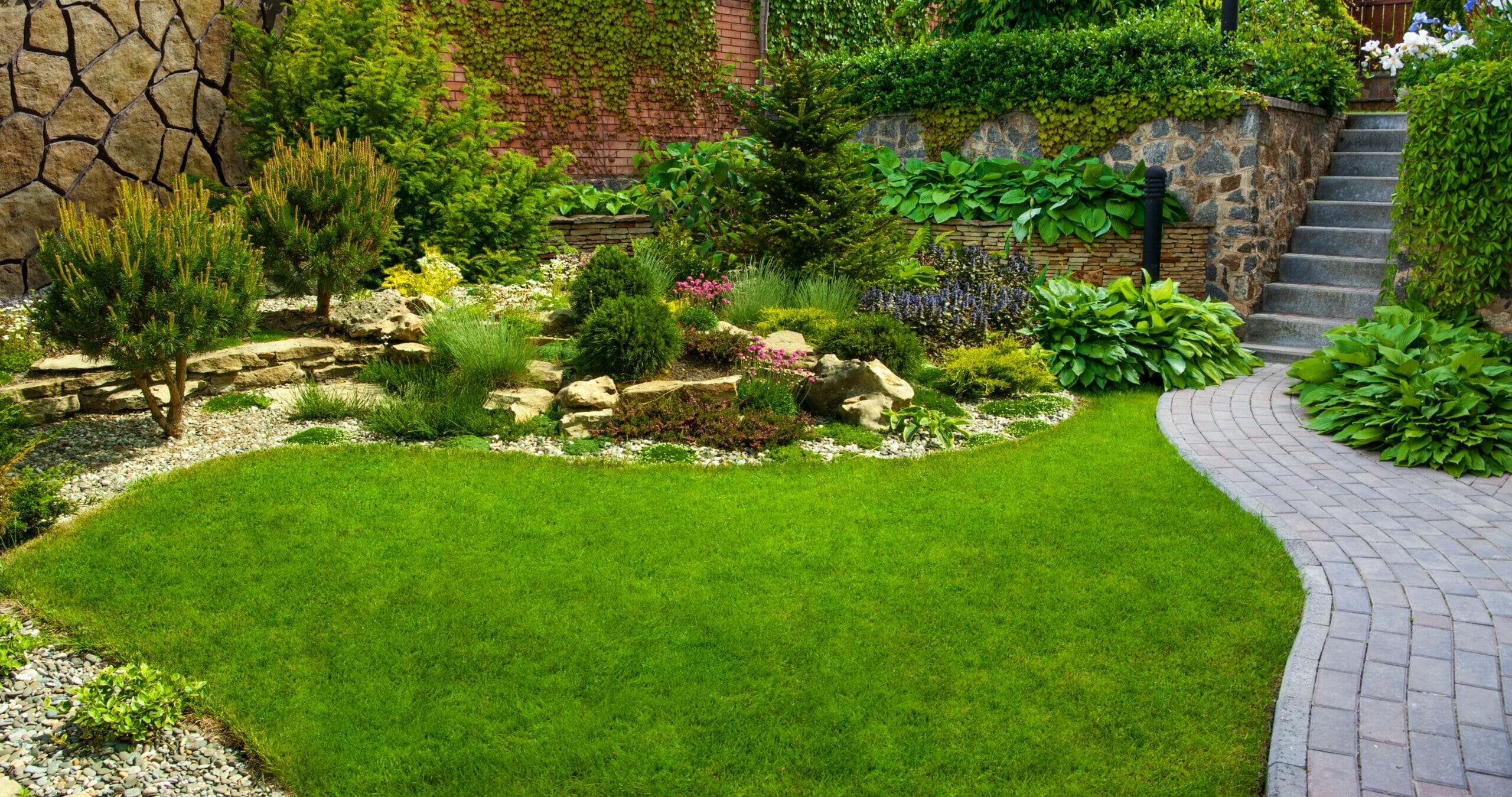
Cultivating Excellence: Understanding and Achieving Quality Landscape Design
In the realm of property enhancement, the concept of a quality landscape extends far beyond mere aesthetics. It encompasses sustainability, functionality, and long-term value, transforming outdoor spaces into vibrant, thriving environments. This article delves into the intricacies of achieving a quality landscape, exploring the key elements, design principles, and maintenance strategies that contribute to its creation and longevity.
Defining Quality in Landscape Design
The definition of a quality landscape is multifaceted, dependent on client needs, site conditions, and ecological considerations. However, core components remain consistent. A quality landscape demonstrates a harmonious blend of design, construction, and maintenance, resulting in an outdoor space that is both visually appealing and environmentally responsible. Key aspects include:
- Aesthetic Appeal: A quality landscape is visually pleasing, incorporating elements of color, texture, and form to create a cohesive and attractive environment.
- Functionality: The design should meet the specific needs of the users, providing spaces for relaxation, recreation, and entertainment.
- Sustainability: Environmentally friendly practices, such as water conservation, native plant selection, and responsible material sourcing, are essential.
- Durability: The landscape should be designed and constructed to withstand the elements and the test of time, minimizing the need for frequent repairs or replacements.
- Maintainability: A quality landscape is designed with ease of maintenance in mind, reducing the long-term costs and effort required to keep it in optimal condition.
The Design Process: Laying the Foundation for Quality
Achieving a quality landscape begins with a well-defined design process. This involves a thorough understanding of the client’s needs, the site’s characteristics, and the surrounding environment. The key steps include:
Site Analysis
A comprehensive site analysis is crucial for identifying the existing conditions and potential challenges. This includes assessing the soil type, drainage patterns, sun exposure, wind patterns, and existing vegetation. Understanding these factors allows the designer to tailor the landscape to the specific conditions of the site, ensuring its long-term success. The soil should be analyzed for pH levels and nutrient content to inform plant selection and fertilization strategies. Proper drainage is vital to prevent waterlogging and root rot, particularly in areas with heavy clay soils.
Client Consultation
Understanding the client’s vision, needs, and budget is paramount. This involves detailed discussions about their desired uses for the space, their aesthetic preferences, and their willingness to invest in ongoing maintenance. A well-defined brief ensures that the design aligns with the client’s expectations and provides a clear roadmap for the project. Discussing long-term goals, such as increasing property value or creating a wildlife habitat, can further refine the design objectives.
Conceptual Design
Based on the site analysis and client consultation, the designer develops a conceptual design that outlines the overall layout and features of the landscape. This includes the placement of plants, hardscape elements, and water features. The conceptual design should be presented to the client for feedback and revisions before proceeding to the detailed design phase. Consider various design styles, such as formal gardens, naturalistic landscapes, or contemporary designs, to determine the best fit for the client’s preferences and the site’s context.
Detailed Design
The detailed design phase involves specifying the exact materials, plants, and construction methods to be used. This includes creating detailed planting plans, grading plans, and irrigation plans. The detailed design should comply with all applicable building codes and regulations. Accurate and comprehensive drawings are essential for ensuring that the construction team can implement the design correctly. The detailed design also includes specifications for lighting, drainage, and other essential elements.
Key Elements of a Quality Landscape
Several key elements contribute to the overall quality of a landscape. These include plant selection, hardscape design, water management, and lighting.
Plant Selection
Choosing the right plants for the site is crucial for creating a thriving and sustainable landscape. Native plants are often the best choice, as they are adapted to the local climate and soil conditions, requiring less water and maintenance. Consider the mature size and shape of the plants to ensure that they will not outgrow their designated spaces. Select plants that provide year-round interest, with a combination of flowers, foliage, and textures. Proper plant spacing is essential to allow for healthy growth and prevent overcrowding. A quality landscape prioritizes biodiversity and includes a variety of plant species to support local ecosystems.
Hardscape Design
Hardscape elements, such as patios, walkways, and retaining walls, provide structure and functionality to the landscape. These elements should be designed to complement the natural environment and enhance the overall aesthetic appeal. Use durable and sustainable materials that will withstand the elements and require minimal maintenance. Consider the accessibility of the hardscape elements, ensuring that they are safe and easy to use for people of all abilities. Proper drainage is essential to prevent water damage to the hardscape. A well-designed hardscape can significantly enhance the value and usability of a quality landscape.
Water Management
Efficient water management is essential for creating a sustainable landscape. This includes using water-wise plants, implementing efficient irrigation systems, and capturing rainwater for reuse. Drip irrigation is an effective way to deliver water directly to the roots of plants, minimizing water loss through evaporation. Rain gardens and swales can be used to capture and filter stormwater runoff, reducing the risk of flooding and improving water quality. Mulching helps to retain moisture in the soil, reducing the need for frequent watering. Conserving water is not only environmentally responsible but also reduces the long-term costs of maintaining a quality landscape.
Landscape Lighting
Strategic lighting can enhance the beauty and functionality of a landscape, extending its usability into the evening hours. Use energy-efficient LED lights to minimize energy consumption. Consider the placement of lights to highlight key features, such as trees, shrubs, and water features. Path lighting can improve safety and accessibility, while accent lighting can create a dramatic effect. Avoid light pollution by using shielded fixtures that direct light downwards. A well-designed lighting system can transform a landscape into a magical and inviting space. [See also: Outdoor Lighting Design Principles]
Construction and Installation: Bringing the Design to Life
The construction and installation phase is where the design is brought to life. It’s critical to choose experienced and qualified contractors to ensure that the work is done correctly and to a high standard. The construction process should follow the detailed design plans and specifications closely. Regular communication between the designer, contractor, and client is essential to address any issues that may arise during construction. Proper site preparation, including grading and soil preparation, is crucial for the long-term success of the landscape. A quality landscape is built on a solid foundation of careful planning and execution.
Maintenance: Preserving the Quality Landscape
Ongoing maintenance is essential for preserving the quality of a landscape over time. This includes regular watering, fertilizing, pruning, and pest control. Develop a maintenance plan that is tailored to the specific needs of the plants and the site. Monitor the landscape regularly for signs of stress or disease and take corrective action promptly. Mulching helps to suppress weeds and retain moisture in the soil. Pruning helps to maintain the shape and health of plants. A well-maintained landscape not only looks beautiful but also contributes to the overall health and well-being of the environment. Regular maintenance ensures that the investment in a quality landscape continues to provide value for years to come. [See also: Landscape Maintenance Best Practices]
The Value of a Quality Landscape
Investing in a quality landscape offers numerous benefits, including increased property value, improved curb appeal, and enhanced quality of life. A well-designed and maintained landscape can create a welcoming and inviting environment for residents and visitors alike. It can also provide valuable outdoor living space for relaxation, recreation, and entertainment. Furthermore, a sustainable landscape can help to reduce water consumption, conserve energy, and support local ecosystems. The long-term benefits of a quality landscape far outweigh the initial investment. A quality landscape is an investment in the future, providing lasting value and enjoyment for generations to come. It demonstrates a commitment to sustainability and environmental stewardship.
Conclusion: Investing in Excellence
Achieving a quality landscape requires careful planning, thoughtful design, and ongoing maintenance. By focusing on sustainability, functionality, and aesthetic appeal, you can create an outdoor space that is both beautiful and environmentally responsible. Investing in a quality landscape is an investment in your property, your community, and your future. The principles outlined here will guide you in cultivating excellence and transforming your outdoor space into a thriving, valuable asset.

